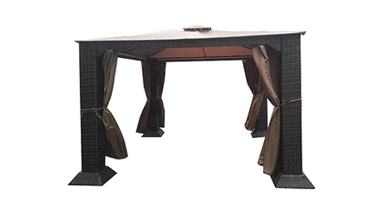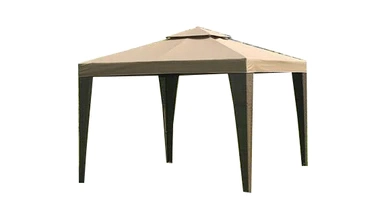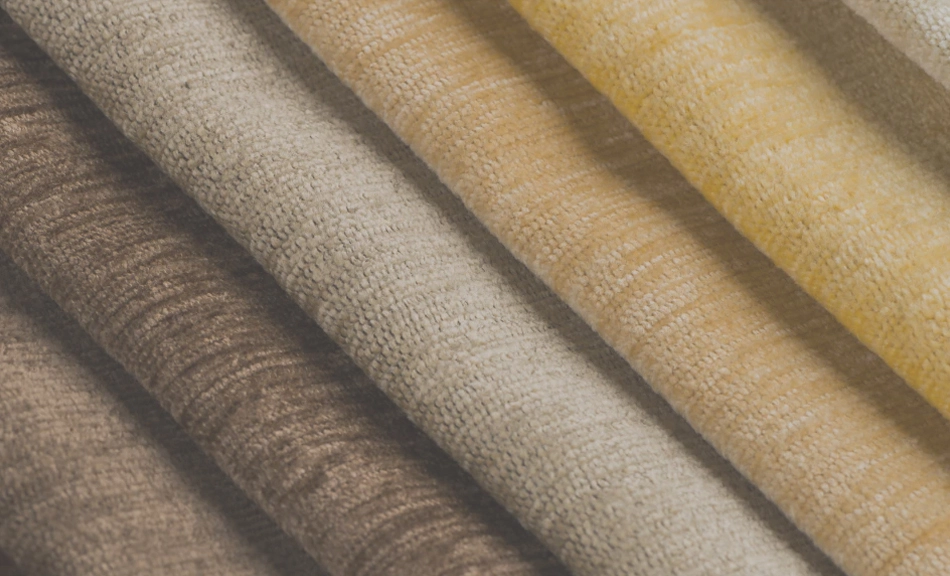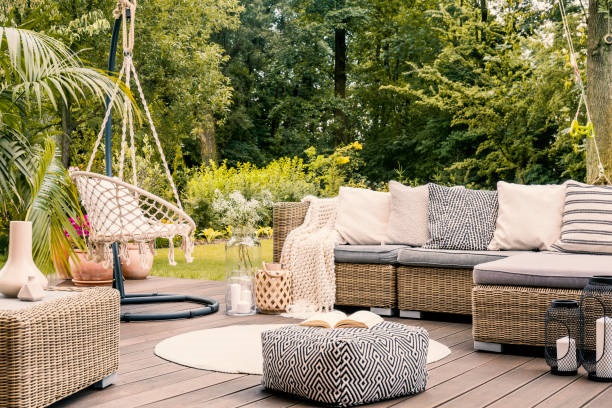Other Types of Outdoor Shelters
Outdoor Shade Umbrella Material
Outdoor shade umbrellas are designed to provide shelter from the sun and rain while enhancing the aesthetics of outdoor spaces. The choice of material for these umbrellas plays a crucial role in their durability, resistance to weather elements, and overall performance. Here are some common materials used for outdoor shade umbrellas:
Sunbrella Fabric: Sunbrella is a high-performance outdoor fabric known for its exceptional durability and resistance to fading, mildew, and stains. It offers excellent UV protection, making it an ideal choice for outdoor shade umbrellas. Sunbrella fabric is available in a wide range of colors and patterns, allowing you to customize the umbrella to match your outdoor decor.
Olefin Fabric: Olefin is another popular fabric used for outdoor umbrellas. It is lightweight, quick-drying, and has excellent color retention properties. Olefin is resistant to mold and mildew, making it a suitable material for outdoor use. While not as durable as Sunbrella, it is a cost-effective option that still performs well in outdoor settings.
Polyester Fabric: Polyester is a versatile fabric commonly used for outdoor shade umbrellas. It offers decent UV resistance and water repellency. While not as durable as Sunbrella or Olefin, high-quality polyester can still provide satisfactory performance in outdoor conditions.
Acrylic Fabric: Acrylic fabric is often used as an alternative to Sunbrella due to its similar characteristics. It offers good UV resistance, colorfastness, and water repellency. Acrylic fabric is soft to the touch and provides a luxurious feel to outdoor umbrellas.
PVC-Coated Polyester: This material features a polyester base with a PVC coating, providing additional water resistance and durability. PVC-coated polyester is a budget-friendly option that can withstand various weather conditions.
Canvas: Canvas is a traditional material known for its sturdiness and natural look. Outdoor umbrellas made from canvas are treated to be water-resistant and provide decent UV protection. However, compared to modern synthetic fabrics like Sunbrella, canvas may require more maintenance and is not as resistant to fading.
When choosing the material for your outdoor shade umbrella, consider the climate and weather conditions in your area, as well as your budget and aesthetic preferences. Investing in high-quality, weather-resistant fabrics will ensure that your outdoor umbrella remains functional and visually appealing for an extended period, enhancing your outdoor comfort and enjoyment.
Outdoor Shade Umbrella Using Tips
Using an outdoor shade umbrella effectively can significantly enhance your outdoor comfort and protect you from the sun's harsh rays. Here are some tips from the shade structure manufacturer to make the most of your outdoor shade umbrella:
Proper Placement: Choose a suitable location for your umbrella, considering the path of the sun throughout the day. Position the umbrella to provide shade in the area where you'll be spending the most time. If possible, angle the umbrella to block the sun at its peak hours.
Secure the Base: Ensure the umbrella's base is stable and secure to prevent it from tipping over on windy days. Some umbrellas come with weighted bases, or you can use sandbags or concrete blocks for additional stability.
Use a Protective Cover: When the umbrella is not in use, cover it with a protective cover to shield it from dirt, debris, and harsh weather elements. This will help extend the life of your umbrella and keep it looking fresh.
Close During Strong Winds: If strong winds or storms are forecasted, it's best to close the umbrella and secure it properly. Sudden gusts of wind can damage the umbrella or even pose a safety risk.
Regular Maintenance: Clean your outdoor shade umbrella regularly to prevent dirt and grime buildup. Use a mild detergent and water to wipe down the fabric canopy, and gently clean the frame with a soft brush or cloth.
Avoid Rain Buildup: Make sure the umbrella is properly tilted or has a vented canopy to allow rainwater to drain off. Avoid leaving the umbrella open during heavy rain, as water pooling on the canopy can cause damage over time.
Check for Wear and Tear: Inspect your umbrella regularly for any signs of wear and tear, such as fraying fabric, bent frames, or broken components. Address any issues promptly to prevent further damage.
Close in Extreme Heat: While outdoor umbrellas provide shade, they may not protect you entirely from intense heat. When temperatures soar, consider seeking shelter in a shaded area indoors or using additional sun protection like a hat and sunscreen.
Tie Down Loose Canopy: If your umbrella has ties or straps to secure the canopy, use them to prevent flapping in the wind. This can help preserve the fabric and reduce wear caused by friction.
Store Properly in Winter: If you live in an area with harsh winters, consider storing your outdoor umbrella indoors during the colder months. This will protect it from the elements and extend its lifespan.
By following these tips, you can enjoy your outdoor shade umbrella to the fullest while ensuring it remains in excellent condition for years to come.








